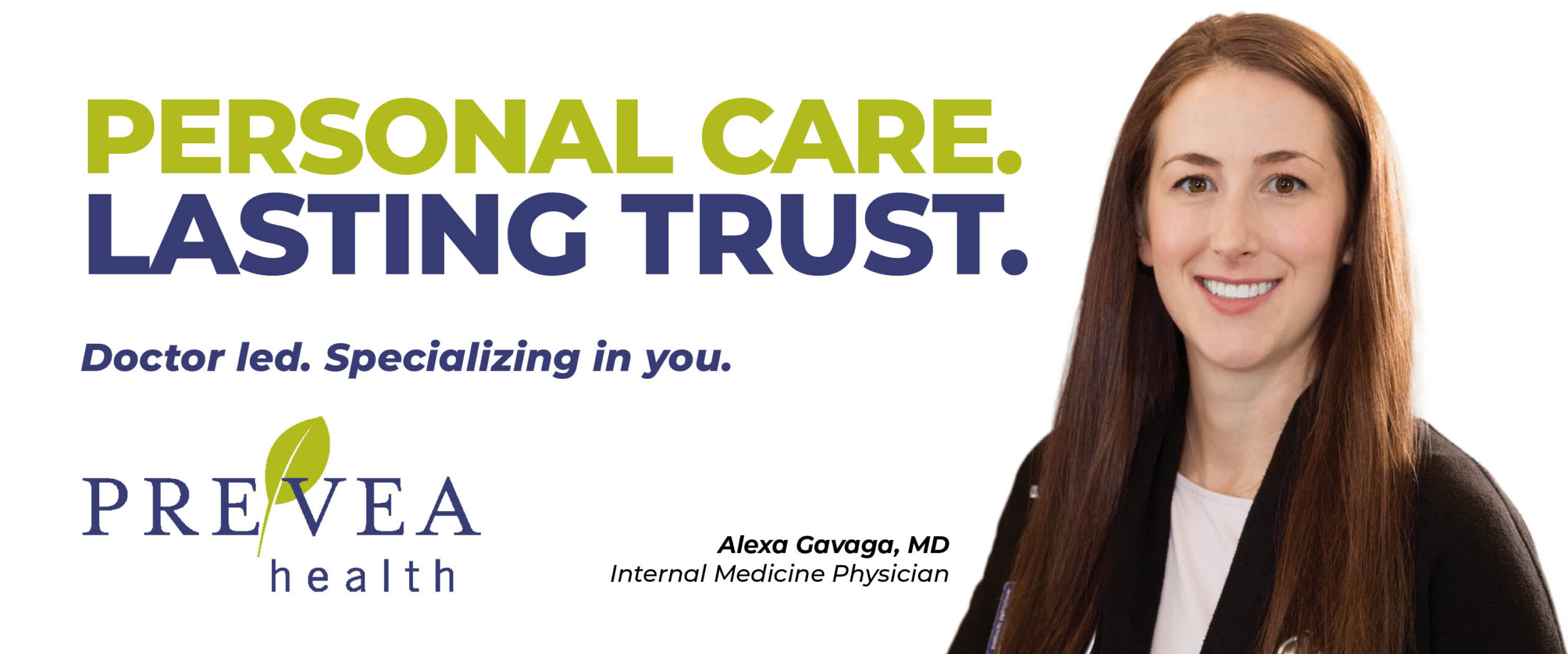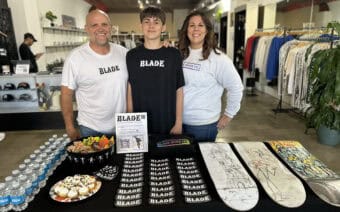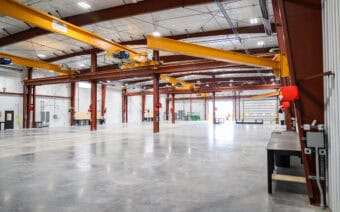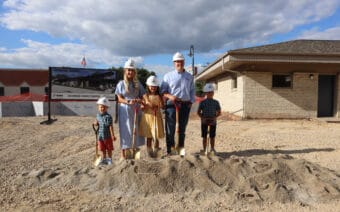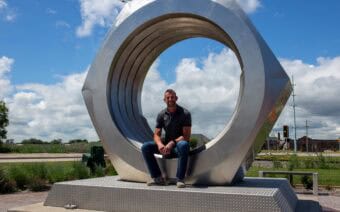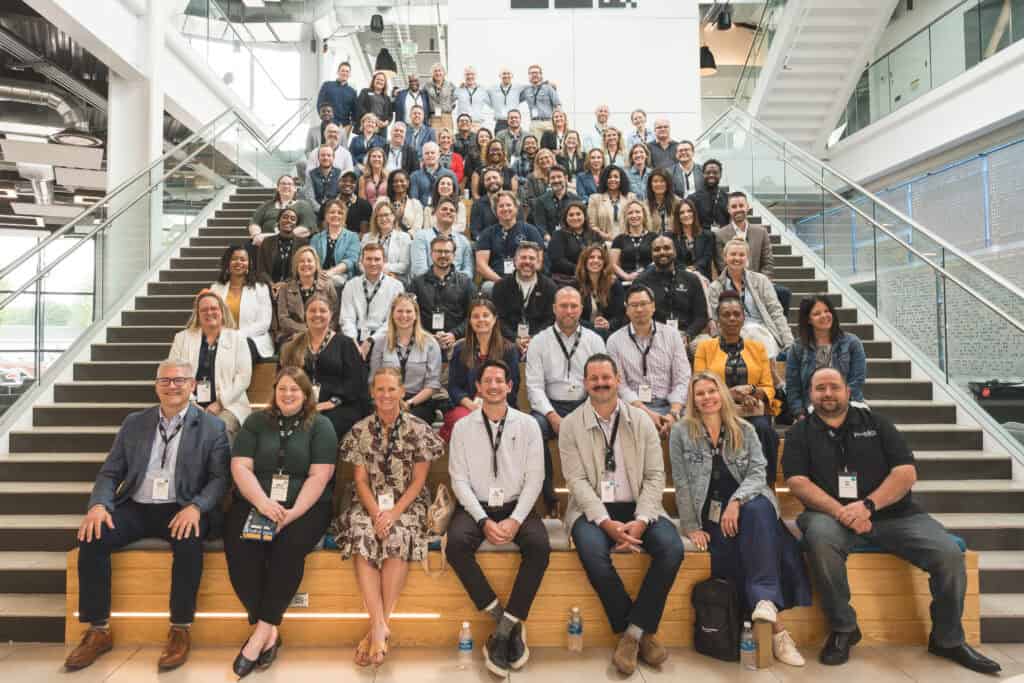
July 14, 2025
GREEN BAY – With nine regional entities throughout the State of Wisconsin directly focused on supporting and advancing the economy, it’s safe to say the Badger State is no stranger to economic development efforts.
Those efforts, however, are often limited to the perimeters of the individual regions.
What is less common, Ian Abston – founder of the Hoan Group and Forward 48 – said, is cross-regional work focused on collaboration instead of competition.
The Hoan Group – an independent group focused on connecting Milwaukee, Madison and, now, Green Bay leaders – Abston said, aims to change that.
Intentionally designed to connect leaders from Wisconsin’s three largest cities, Abston said the goal of the Hoan Group is to create a network of relationships based on trust, respect and a shared passion for supporting a “vibrant and prosperous region.”
“I realized our problem is actually small thinking,” he said. “If all we’re doing is looking at Milwaukee’s problems, we can’t actually come up with a solution – we need partners.”
Drew Formentini, strategy and growth operator for the Hoan Group, said they are using collaboration as a leading tool to drive progress in Green Bay, Madison, Milwaukee and “ideally, then, statewide.”
“[We’re] bringing people together from different backgrounds, different industries that maybe wouldn’t have ever had a collision before, in a setting like this… to help move our state in the right direction,” he said. “So, breaking down silos and doing things in a collaborative way where we benefit, as opposed to Green Bay operating independently from Madison and Milwaukee and the rest of the state. Let’s find a way to do all that together.”
Part of this is accomplished, Abston said, through the organization’s City Exchange initiatives – the most recent of which saw Milwaukee and Madison business leaders taking a bus trip to Green Bay.
The idea behind the City Exchange initiative, he said, is simple: bring together leaders from Wisconsin’s three largest cities to explore how each community tackles talent attraction and retention, economic growth, housing, community building, etc.
Abston said the two-day event – which was held at the end of last month – helped break down regional silos and promote an exchange of ideas and best practices, specifically between Milwaukee/Madison and Northeast Wisconsin, which up until this point wasn’t intentionally taking place.
Formentini said oftentimes, people are working solely within their own area, industry and/or city, thereby missing the bigger picture, including how “the New North [region] has a tremendous impact on the greater state.”
“It’s the same thing with Madison and the same thing with Milwaukee, but for different reasons,” he said. “So, let’s take the wins and the benefits and what’s unique to each of those regions and point them all in the right direction toward a better response.”
Kimberly Kane – president and CEO of Kane Communications Group and a Milwaukee participant of the recent City Exchange: Green Bay – said the “vibrancy of economic development in Northeast Wisconsin” was one of the major drivers behind a recent acquisition she made in Green Bay.
“When I learned the Hoan Group was considering a City Exchange in Green Bay, I wanted our team to be very involved out of the blocks,” she said.
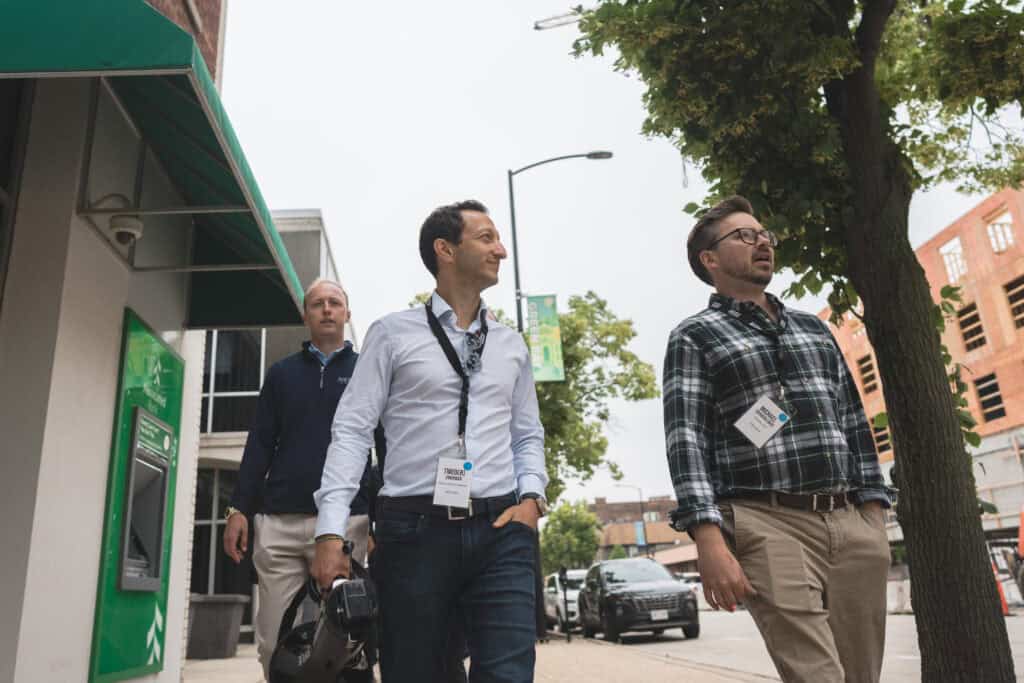
Though leaders from Milwaukee and Madison have been collaborating through the Hoan Group already, Abston said this most recent City Exchange was the organization’s first intentional step toward building stronger relationships with Greater Green Bay and including them in the conversation.
“[Members from all three cities] are all in business – some in civics, some in economic development, [some in nonprofit] – but at the end of the day, we all share Wisconsin, specifically this region, and more importantly [we share] tomorrow’s problems – unless we develop the relationships today to fix them tomorrow,” he said. “That’s big-picture thinking. Nothing is going to happen [literally] tomorrow, but everything is going to happen one handshake, one hug, one bus ride at a time… Change moves at the speed of trust.”
A collaborative approach
During the City Exchange’s first panel discussions, Zach Brandon – president, Greater Madison Chamber of Commerce – said regional collaboration can only lead to mutual economic development when regions shift from a competitive mindset to a collaborative one – wherein they see themselves as parts of a larger ecosystem, working toward common economic goals for Wisconsin.
“I think we are stuck in an ‘us-versus-us’ cycle,” he said. “Milwaukee is not my competition, and I’m not Milwaukee’s competition, and Green Bay is not our competition – but we treat ourselves like competitors.”
Brandon said it’s also important not to confuse geographical definitions with political definitions.
“I think there’s a tone to the political rhetoric in this state that has to get tamped down if we’re going to ever really think about how region [collaboration can] work,” he said.
Further, Brandon said regions should avoid defining themselves by strict municipal lines.
“Economies don’t have bright municipal lines – they have blurry economic lines,” he said.
Instead of focusing on individual boundaries, City Exchange Panelist Dale Kooyenga – president of Metropolitan Milwaukee Association of Commerce – said regions should focus on their collective strengths, looking at geography as an opportunity for collaboration, not a limitation.
Panelist Barb LaMue – president and CEO of New North Inc. – said a recently commissioned report in collaboration with Milwaukee 7 (Kenosha, Milwaukee, Ozaukee, Racine, Walworth, Washington and Waukesha counties) and the Madison region (Columbia, Dane, Dodge, Green, Iowa, Jefferson, Rock and Sauk counties) showed that with the inclusion of Greater Green Bay, “our three regions make up 74% of the state’s population.”
“Having a mega-region of three regions – how powerful is that?” she said. “When you have a population of four million people, just in our three regions, you start to really be able to compete on a global scale.”
Referred to in the report as the Innovation Triangle – or more affectionately known as the “Cheese Wedge” – LaMue said the report “really takes a look at the changing landscape of entrepreneurs.”
“We know how you build a region – not only [are you] supporting the companies that are [already in your regions] and recruit[ing] new business investment to your region, but [you are also] support[ing] start-up companies,” she said. “[Start-ups are] that third leg of the stool – and we know the landscape is changing.”
As startups become “much more high-tech,” LaMue said the question is: “how do we do a better job at shared resources?”
While retaining appreciation for each region’s unique brand and identity, LaMue said to further help support collaboration, it’s important to look at how “we can co-brand our three regions, or even more, how do we rebrand the State of Wisconsin?”
“It’s all about storytelling,” she said. “It’s all about how we help one another. And I think the more we [collaborate], the more organically we’re going to increase levels of activity and partnerships.”
In the same breath, LaMue stressed the importance of being sensitive to the nomenclature used within those cross-regional collaboration efforts.
“We were very intentional about it being NEW – Northeast Wisconsin – North, because we also serve people in Sheboygan and Oshkosh and Door County and Florence, so we want to keep it very general,” she said. “You have to know your audience. You have to really look at how you frame geography in the conversation of what’s going to allow you to get the job done.”
Removing barriers
As a newer voice of economic development in the region, Panelist Lisa Jossart, vice president of economic development for the Greater Green Bay Chamber, said though she’s a “Green Bay lifer” – calling the region home for more than five decades – her team learns “10 new things every single day that are right under our noses that we didn’t know about.”
“Every time you drive anywhere around this area, there’s literally a new building coming to life, whether it’s being built or refreshed,” she said.
Still, despite the region’s powerful manufacturing and supply chain capabilities, Jossart said in conversations outside of Wisconsin, “I don’t really hear Green Bay mentioned.”
“I want this region [and] this state to be called out as the place to go if you have a small, medium or large manufacturing business,” she said.
Kooyenga said Wisconsin is similarly strong in agriculture, attributing these statewide successes to a relative lack of fiscal restriction.
“Manufacturing and agriculture are not taxed in Wisconsin – it’s essentially zero tax,” he said. “There’s no state that has a leg up on us tax-wise on manufacturing and agriculture.”
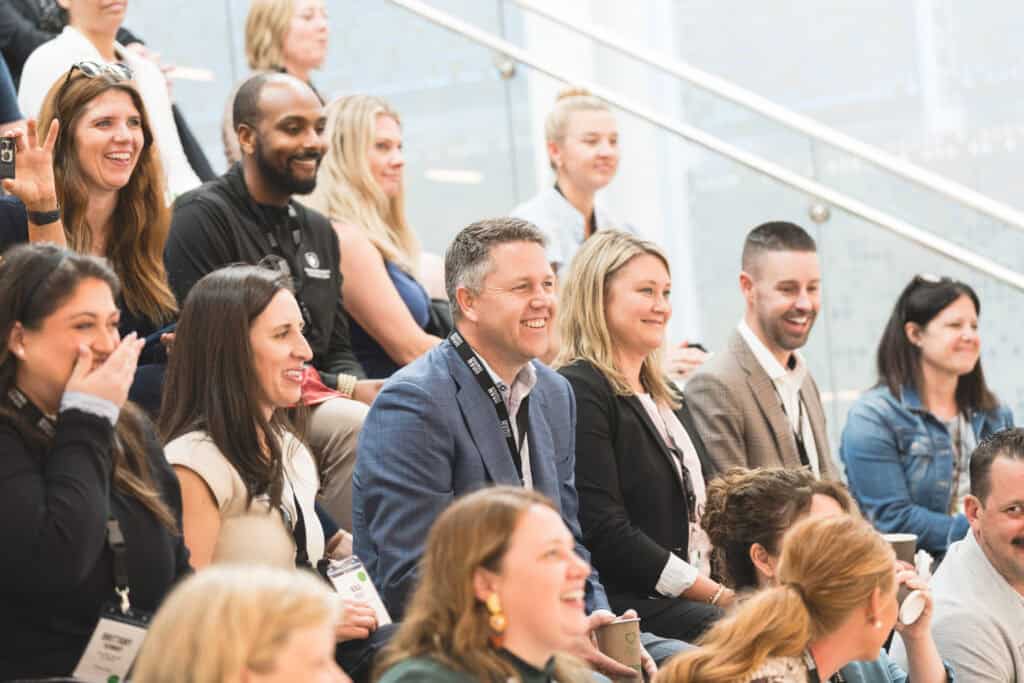
Kooyenga said there’s a resurgence of manufacturing in America, and “if it’s high-skill and high-margin, it’s Wisconsin.”
However, from a public policy perspective, Kooyenga said the Badger State needs to become more competitive regarding income tax rates.
“If you drive from Wisconsin all the way to Key West, you’re not going to drive through a state with higher income taxes for small business owners than Wisconsin,” he said. “You could drive all the way west to California – and if you’re not going through Minnesota – the only state that has higher income taxes is California. And if you’re heading east, you have to go away to New York [to find a state with higher income tax].”
Supporting Kooyenga’s claim, Brandon said tax policy is a critical piece of the broader strategy to make Wisconsin more attractive to entrepreneurs and businesses.
Though Wisconsin may not have the largest workforce, Kooyenga said the regions of the Cheese Wedge represent “a better quality of work.”
“We don’t have the quantity; that hurts us – we have demographic challenges, and we have to work on that,” he said. “But we have a better quality.”
Part of the solution, Kooyenga said, is being intentional regarding Wisconsin’s immigration pipeline.
“I think the greatest thing we can do across all regions is – we have to be a state that welcomes more immigration,” he said.
LaMue said though she firmly believes opportunity is everywhere, “access to that opportunity is not.”
“It is incumbent on us as leaders in your communities to make sure you’re extending that opportunity to all people in your community,” she said.
Jossart said with workforces growing more diverse, it’s important to embrace diversity.
“I think we’ve made a lot of progress, but we have an awfully long way to go,” she said. “We need to engage our companies to share their best practices with others and potentially lean into each other. We’re constantly looking for places where those [collaborations] are happening and share them, when appropriate, with others.”
Jossart said focusing on the “old model of marketing and communication” won’t always work to create real change.
“We have to be ready for [progress] to be more complicated,” she said. “I know we can be successful, but it is not easy to do that.”
Beth Hudak – director of community engagement at House of Hope Green Bay – said her main takeaway from the panel was the importance of “learning from and collaborating with all our neighbors throughout Wisconsin.”
“It’s easy to feel a little alone up here in Northeastern Wisconsin,” she said, “so it was nice to hear that our pain points are others’ pain points, too – things that we can explore, learn, shape and solve together. Partnerships with businesses, nonprofits and agencies in Madison and Milwaukee will only help Green Bay grow and serve to strengthen our entire state.”
Shared opportunities
Kooyenga said it’s a unique advantage that in all three regions, “you don’t have to choose between family and career.”
“Family means a lot to me – I have four kids; it’s why I fight, both figuratively and literally – and we all live in places where there’s no sacrifice on that,” he said. “You can have your cake and eat it, too. I think that’s something we should be more boisterous about.”
When focusing on five different marketing campaigns – aimed at attracting new people to the New North region – LaMue said “we met with several different groups [and] sent the right message to the target audience.”
“In the last four years, our region has had a net migration of 19,000 new people,” she said. “It’s not only [due to] the marketing campaigns, but how we’re leveraging our corporate innovation strategies as they recruit.”
LaMue said implementing those marketing strategies across the Cheese Wedge region has the possibility of facilitating impactful change.
“It gets back to really knowing your audience and making sure you’re opening up access to those opportunities to everyone,” she said.
Part of that conversation, Brandon said, also focuses on place-based economic development.
“[It’s about] understanding the value of your place, the advantages of your place and figuring out how you can scale that,” he said.
Between Milwaukee and Madison, Brandon said there are “probably 160 companies that touch, innovate and change the game in health.”
“We don’t brand that, we don’t talk about it – it’s just, that’s Milwaukee and that’s Madison,” he said. “So, I think understanding what we do well together, and then figuring out what the bond is, is the opportunity – whether that’s the Cheese Wedge or whether it’s the [Milwaukee/Madison] corridor.”
Jeff Musa – Peoples State Bank’s regional president, southeastern Wisconsin – said participating in the recent City Exchange underscored his appreciation for how differences and similarities can serve to enrich and unite under a common cause, while fostering lasting relationships.
“When you have people who care and will invest in one another – whether it be time, talent or treasury – toward a positive outcome for all, [good things happen],” he said. “It starts with one-on-one relationship building.”
Metrics and messaging
Kooyenga said Metropolitan Milwaukee Association of Commerce’s strategic plan – set to be released this fall – will include “very specific metrics to hold ourselves accountable” regarding economic development initiatives within and around Milwaukee.
These strategies, he said, have the potential to cast a wider net as fellow Cheese Wedge regions – Green Bay and Madison – look to accomplish many of the same goals.
When measuring success in the economic growth realm, LaMue said it’s crucial to look further than traditional economic development metrics.
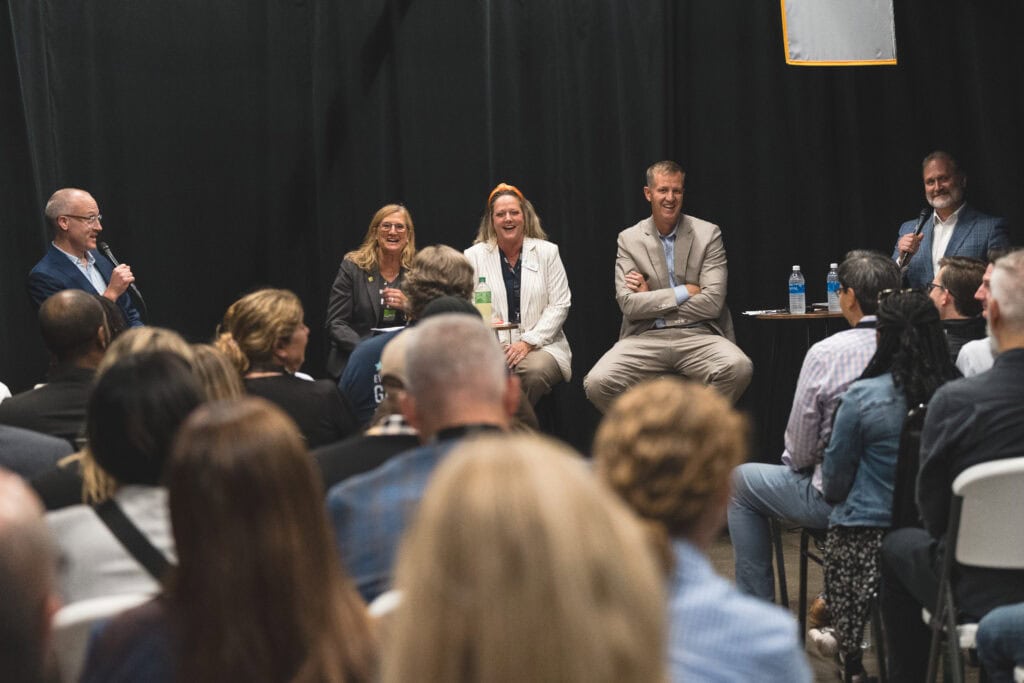
“In our annual reports, we used to record the number of square footage, the number of acres that were sold, the price of land, the number of jobs that were created and retained,” she said. “That has really shifted [as of late]. Economic prosperity also means that people who want to own a home can buy a home. People who want public transportation have access to public transportation. People who want to own their own car can own their own car.”
Child care, and the lack thereof across all three regions, LaMue said, is another critical aspect of that conversation.
“Prosperity to us… takes into account all of those various measurements that, at the end of the day, we hope help people to be fulfilled,” she said. “Prosperity isn’t all about money… That’s a factor, but that’s not the only factor. I think it’s incumbent on us to kind of break out of the old world of economic development and how we used to measure success.”
Echoing that point, Jossart said success comes when all businesses are engaged and invested in the region’s collective success.
“This means essentially being out in the community and meeting with all the businesses,” she said. “And we mean all the businesses, from sole prop[rietorship]s, to entrepreneurs, to small businesses and all the way up – not telling them what we’re going to do and what we see as the challenges or opportunities, but really listening and getting to understand where they’re at.”
Part of that conversation, Brandon said, also includes throwing out the conventional wisdom of how things are done.
“You have to check yourself, to say, ‘Who’s in the room?’ – and then, more importantly, ask who’s not in the room,” he said. “We should be looking at negative space, not positive – who’s missing, as opposed to who is there.”
Further, LaMue said when New North started building its cultural engagement strategies, a citizen told her “just please make sure you don’t do anything for us, without us.”
“Which means ask them – have these conversations,’” she said. “We shouldn’t be just holed up in our office to say, ‘Hey, let’s create a new program just because we think it’s the right thing to do.’ Let’s talk to our communities, and do what they want us to do.”
Tangible goals
The family-owned companies that call each of the Cheese Wedge regions home, LaMue said, are a good place to start in fostering cross-regional collaboration.
“I look at our three regions, and we are blessed to have significant family-owned companies,” she said. “So, maybe we start there.”
LaMue said this could include convening a summit and asking top leadership from those privately held companies – “not that our publicly traded companies aren’t important, but family-owned companies look at stockholder value differently” – for insight.
“We say to them, ‘You have your growth strategy, you’re attracting people and business investment – help us grow a better region,’” she said.
This, LaMue said, could also help businesses think outside their own regional bubbles.
“If they’re a privately held company in Sheboygan, they may not know everything that’s going on in Madison or Milwaukee,” she said. “So, we get them to start thinking a little bit differently about their own growth opportunities across the State of Wisconsin.”
In addition to family-owned, established companies, Jossart said another area to elevate is the entrepreneurship space – specifically, diverse entrepreneurs.
“It is not easy to navigate [things] if you’re a diverse [entrepreneur] in a lot of different ways,” she said. “It’s not easy to fill out online municipal and county forms just to get started. I would love to learn from what you all are doing in your communities, and I’d love to share some of the things that we’ve done.”
Brandon, Jossart, LaMue and Kooyenga agreed that collaboration is possible, but said it requires intentional effort to overcome ingrained barriers – many of which are largely self-imposed.
Enabling collaboration, Jossart said, is a responsibility shared by all leaders.
| Barriers to regional collaboration |
|---|
| Psychological barriers: – Political rhetoric that creates division between regions – Mindset of “us-versus-us” competition – Geographical stereotyping and negative perceptions |
| Communication challenges: – Lack of understanding of each region’s strengths – Ineffective sharing of success stories – Insufficient platforms for cross-regional dialogue |
| Structural hurdles: – Municipal boundaries that create artificial economic divisions – Competitive economic development strategies Inconsistent support for entrepreneurs across regions |
| Cultural issues: – Political leaders who benefit from regional antagonism – Tendency to focus on individual regional identities rather than collective potential – Limited trust between different economic development organizations |
| Suggested solutions |
|---|
| – Challenging divisive political rhetoric – Creating more collaborative events – Focusing on shared opportunities – Building social capital through personal relationships – Developing joint initiatives that require cooperation |
Talent attraction, retention
Barbara Koldos – vice president of business development at New North, Inc. and moderator for the City Exchange: Green Bay’s second panel discussion – said although the New North region has seen an increase of nearly 20,000 net migration in the last four years, the UW Extension recently reported “Wisconsin’s labor shortage is a major barrier to growing the state’s economy – [mainly] because we have more job openings than people,” she said.
Historically, Koldos said, companies would connect with New North and share what their requirements were – utilities, acreage, energy use needs, etc. – “and then they would find a site, and people would follow.”
“That model has kind of been flipped now,” she said. “The companies are now first looking at where the people are moving to, and then they say, ‘Huh, maybe that’s a place where I should look at putting a site.’”
Talent attraction, Koldos said, isn’t really about jobs – “it’s about how we create the purpose and the place in the community that people want to move to, and therefore bring businesses and investment into our region.”
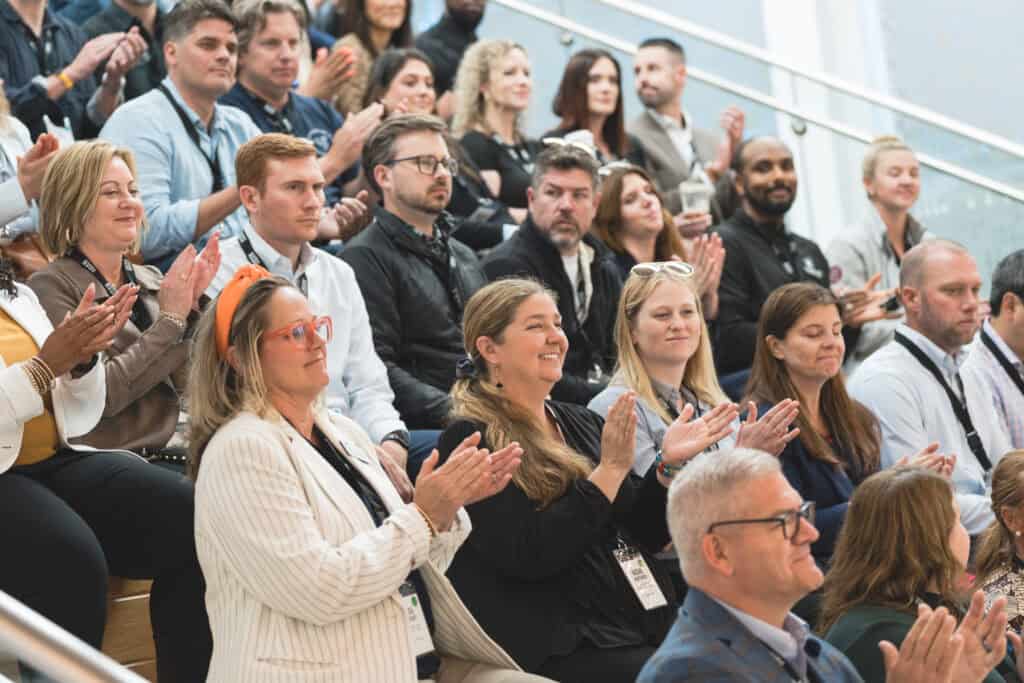
When deciding to relocate for a job opportunity, Panelist Craig Dickman – managing partner with TitletownTech – said people want to know they can grow personally, professionally and economically – “and they have to be able to grow all three.”
The same thing, Dickman said, goes for talent retention.
“If we can create those opportunities, people will come,” he said. “If we can’t, [then even if they do come], they won’t stay.”
Presently, Abston said, community-minded leaders should aim beyond traditional recruitment and focus on creating an environment where talented individuals want to build their careers and lives.
For young professionals to thrive, he said, they need spaces where they can meet friends, date, find mutual interests, develop networks, etc.
Part of supporting this infrastructure, Abston said, includes “going after the best and brightest in our backyard.”
“We should be treating our talent the same way we’re treating kids entering the portal in sports,” he said. “We should be making sure this pipeline from high school all the way through college [is strong], because people only see themselves growing if they see opportunities in front of them… I think there is a lot we can be doing to connect our pipelines together.”
Fostering opportunities for talent to become rooted in the community, Abston said, further solidifies a regional connection, noting that:
- After age 30-35, it becomes harder to move
- People stay when they develop strong personal and professional networks
- Community connections become as important as career opportunities
“When you find your people,” Abston said, “it’s hard to leave.”
Rebecca Finco – an economic development specialist with the City of Green Bay and a participant in the City Exchange: Green Bay – said she’s well acquainted with the unique challenges of relocating later in life.
“Having moved to Green Bay in my mid-forties as a trailing spouse, I experienced many of the obstacles discussed firsthand while working to establish myself in a new community,” she said. “It was encouraging to hear HR professionals are increasingly aware of the need to support not just the employee but their entire family, and are actively implementing strategies to facilitate a smoother transition.”
Panelist Jenene Calloway – senior vice president talent development and chief diversity officer at Schreiber Foods – said it comes down to being “brilliant at the basics” and creating genuine, meaningful connections with talent.
“I think that’s something we take for granted,” she said. “Though they’ll find a church on their own, or they can look into all the different schools in the area and figure out what’s important – we need to curate all of that information for them and make it easy. And, I think, sometimes we forget about that.”
Calloway said being strategic with talent retention should start by connecting with new employees early – even before they start.
After hiring a new employee, Calloway said Schreiber Foods immediately begins engaging with that employee.
She said this includes:
- Encouraging new hires to post about their new job on LinkedIn
- Having business resource groups proactively reach out to new employees before their start date
- Sending welcome messages like “We can’t wait for you to start here”
- Including information about inclusion and belonging efforts in onboarding
- Inviting new employees to join distribution lists for resource groups
- Ensuring new employees understand the organization’s commitment to diversity and inclusion from the very beginning
The key, Calloway said, is creating a sense of connection and community before the employee’s first day – “making them feel welcomed and valued from the start.”
Economic development, Abston said, goes hand and hand with community development when discussed in the context of talent attraction and retention.
“Focus on creating spaces where people want to participate and feel energized,” he said.
When having these conversations, Calloway said though there is a strong focus on young talent, it’s important that “we’re not just thinking about the 18 year olds.”
“When we think about bringing talent into our institutions, we need new talent, but we also need experienced talent,” she said. “Quite often, our efforts to attract talent are focused on one demographic, and we miss the boat.”
Though the hope is for any relocation to succeed, Dickman said it’s important for all three regions to emphasize “there are options” for alternate plans if need be.
“It’s important to show potential employees that they have options if their initial job doesn’t work out,” he said.
This emphasis, Dickman said, includes removing barriers and creating an environment where talented individuals feel they have multiple pathways for growth.
He said he cautions employers against certain contractual restrictions which can prove detrimental to individuals and, by extension, communities.
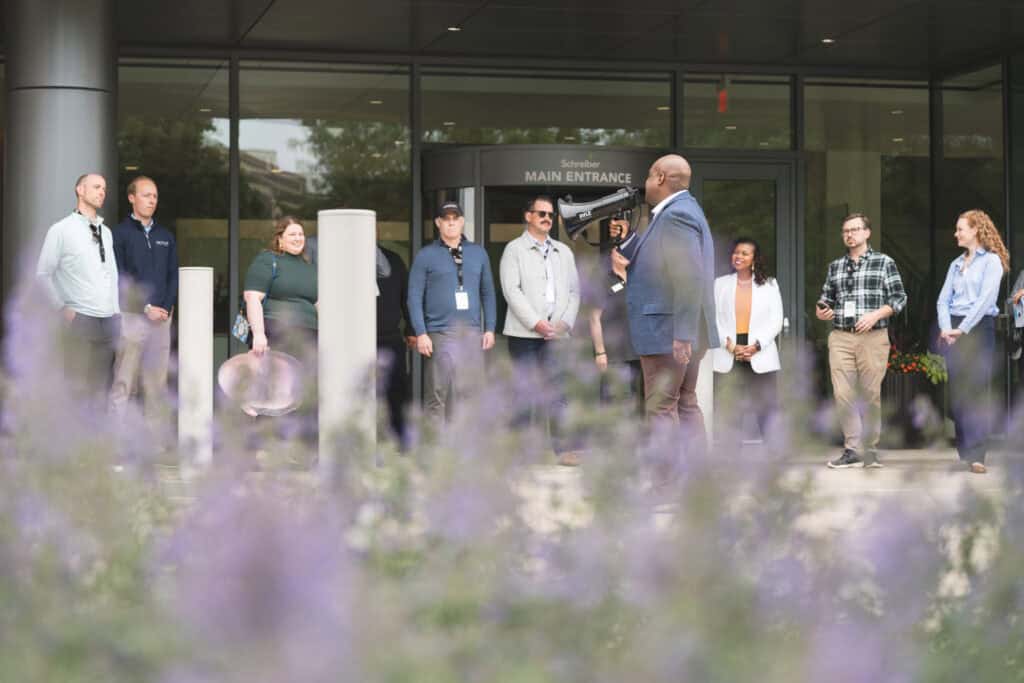
“One of the things that really annoys me on the retention side is when people start with employment agreements, non-compete agreements,” he said. “It’s like [saying], ‘Okay, you’re going to move to town [for this job], but then, if things don’t go well, [we’ll] make sure you can’t work in your profession.’ Talk about a way to drive someone out.”
Such handcuffs, regarding talent attraction and retention, Dickman said, “are not the answer.”
“Some companies go as far as if an employee enters an educational program to get their master’s degree, that company says, ‘Okay, but after, you have to stay with us for five years, or you have to pay it back,’” he said. “If a company can’t find a way to really utilize all the talent they have, that’s a company’s problem, not the individual’s problem.”
Dickman said it’s also important to take into consideration the spouse and/or family who is accompanying the employee in the move.
“They need to integrate in the community and be professionally challenged as much as the person we’re trying to attract,” he said.
Getting people involved in the community, Dickman said, is where each region’s nonprofits “play such an important role.”
“The part that is the underlying glue, in some cases, is the nonprofits that we have where we can get people involved with purpose, because they find things that matter to them and find things that connect to them,” he said.
Collaborative talent strategy
Citing the Wisconsin Department of Administration’s projections of the state’s population decreasing by 200,000 by 2050, Abston said “we have a collective problem.”
“First, if we are going to work on a solution, we have to identify that we have a mutual problem,” he said. “We either have to agree to start scaling back to be prepared for the loss of 200,000 people, or we have to gather to make steps to grow the region. I think the easiest thing to do would be developing these pipelines.”
Calloway said, again, this involves being brilliant at the basics of finding and keeping talent.
“I’m not saying I’m opposed to innovative ideas or thinking outside the box, but I think in the process of us trying to do that as institutions, we’ve lost sight of the candidate experience and the employee experience – from how long we take to contact them, who they interact with, what follow-up looks like, what onboarding of that individual looks like – does the leader even know?” she said.
Echoing Abston and Calloway’s points, Dickman said this includes prioritizing human relationships over transactional approaches.
“I think it’s important to look for those places where communities convene, where organizations like Schreiber Foods connect with the TitletownTechs and the Hoan Groups and start creating some cross-connections, so people can [tap into] areas of resources where they may not have them natively,” he said.
Just as collaboration between communities is important, Dickman said, so, too, is “the collaboration within communities, and then the necessity to collaborate beyond what’s your normal work group.”
“All the attorneys aren’t getting together to talk about law, but all the attorneys are getting together to talk about community and festivals,” he said. “I think each one of us has to think about how we extend what we are into others in the organization, [and] connect and collaborate at a really deep level.”
Jonie Panick – new business development manager at CJ & Associates Inc. and a Green Bay participant of the recent City Exchange event – said although the proverb “It takes a village…” typically refers to raising a child, “it can be expanded to be so much more than that.”
“It takes a village to uplift the community,” she said. “It takes a village to enact change… One person can inspire it, but it’s through the combined action of a village that change happens. I think bringing in those people who are passionate about making change happen is the most important thing a community can do.”
The City Exchange experience
The 51 participants from Milwaukee and Madison (according to the Hoan Group) who made the trip north were welcomed by 52 leaders from Northeast Wisconsin-based businesses and organizations, which, per Hoan, spanned industries including health care, education, law, marketing and manufacturing, as well as the nonprofit sector.
Northeast Wisconsin participant Jeff House – CEO and president of Oneida ESC Group – said what resonated with him from the experience was the message of collaboration.
“I agree that leaders need to think more broadly or globally than the local neighborhood if they want their backyard to be strong,” he said. “Our community will only be as strong as the region or state, so it makes sense that we work collaboratively.”
House said he hopes these efforts lead to “strong connections” that in turn lead to investment and growth for Northeast Wisconsin.
“I also hope they expand the network to the western and northern parts of the state,” he said. “I think [those regions] have a lot to offer, and can be a benefit to the City Exchange.”
Milwaukee participant Kane said she came away from the two-day event with fresh inspiration and new connections.
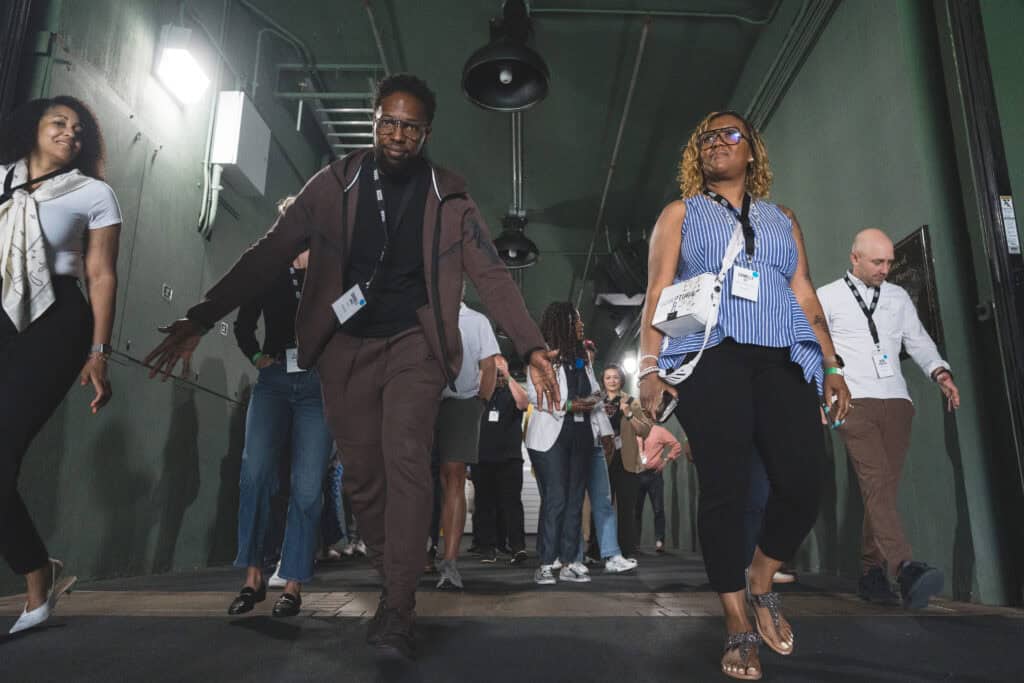
“The major takeaway for me is that there are no geographic boundaries to our interest in getting to know leaders in each city – no barriers to our interest in working together and supporting increased understanding, collaboration and growth of our regions and our companies,” she said.
The value of these events, Kane said, stems from the in-person interaction, noting that even “as technologies like AI ramp up… you can’t automate trust.”
“Technology can bridge gaps, but it can’t bring people together in lively, meaningful ways that spark real connections, build trust and generate new ideas,” she said. “Events like the City Exchange and groups like the Hoan Group are so important because they create the spaces where this happens.”
Kane said she’s seen firsthand how these connections can “inspire partnerships, strengthen local businesses and encourage people” to get involved in their community in ways they might not have otherwise.
“When people feel heard, included and valued, they show up with their best ideas – and that’s how real, meaningful progress happens for our regions,” she said.
Kane said she hopes the City Exchange initiative sparks real connections that lead to action.
“If just one conversation inspires a partnership or a new initiative that helps strengthen a business or our community, that’s success,” she said. “I think the biggest impact comes when people connect in real ways and see how much we can accomplish together.”
Green Bay participant Finco said she came away assured “there’s tremendous potential to join forces” across the Cheese Wedge.
“Not just to strengthen our individual communities, but to elevate the entire region and state,” she said. “In other words, by working together, we have the chance to complete the entire ‘cheese wheel’ and drive economic prosperity.”
The Hoan Group Green Bay
Day one of the recent City Exchange was bookmarked with the official announcement of Hoan Group’s 2026 expansion to Green Bay.
“This is the start of a new chapter: one built on connection, collaboration and a shared vision for a stronger Wisconsin,” Abston said.
As they did during the panel discussions throughout the day, participants from across the Cheese Wedge shared enthusiasm for the announcement.
“Starting a Green Bay chapter of the Hoan Group is a great way to bring people together, build connections and get more people involved in shaping the future of our community,” Finco said. “It can help newcomers feel more at home, support emerging leaders and create space for fresh ideas and diverse voices.”
On a broader scale, she said it gives Green Bay a “seat at the table” in regional conversations.
“[This way], we’re not working in silos but teaming up with other communities to make Northeast Wisconsin stronger and more connected,” she said.
Hudak said some of Hoan Group’s initiatives hit close to home for her, especially those focused on finding a sense of community after relocating for work.
“[My family] moved to Green Bay for an opportunity, but we didn’t have family or friends to offer us a ready-made community,” she said. “It was a huge struggle to find like-minded people who cared deeply about the community and were open to making new friends. [Hoan Group] feels like the people/group I needed 13 years ago.”
Panick also said these efforts are vital to successfully recruiting and retaining talent in Wisconsin.
“Many of the ideas resonated with me as someone who not only moved to Wisconsin but also hopes to help continue to contribute to my community to keep it a place to stay long-term,” she said.
Musa said from his Milwaukee-area perspective, he “can tell Green Bay is a city on the rise,” and anticipates building a stronger connection to the region.
“I hope to make Green Bay a city that is part of my network,” he said. “I have already worked with clients and businesses in the city, but now have a better feel for the city, and was impressed with what I was able to learn even in a short time. I will be back soon.”
Abston said he looks forward to some of the brightest minds from Wisconsin’s third-largest city, who offer unique wisdom, perspectives and experience, joining as partners in achieving statewide breakthroughs.
“If we want Wisconsin to be the best it can be, we need to learn how to work together to solve our problems,” he said.
For more information on membership opportunities, visit hoangroup.com.
 Powering forward with solar energy
Powering forward with solar energy Oconto Falls development is on the rise
Oconto Falls development is on the rise
